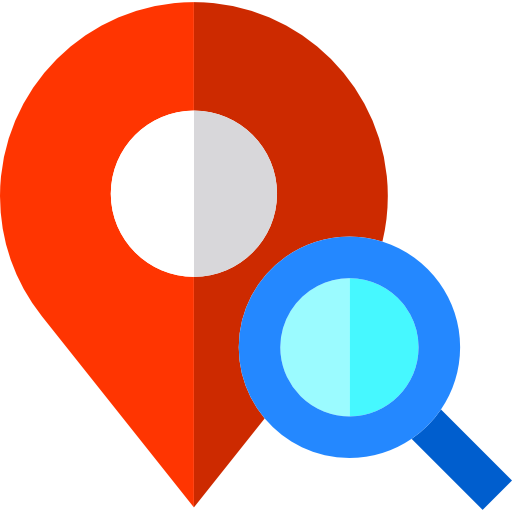Python and SQL for Data Science
..

Python and SQL are two key tools in the field of data science, each serving distinct but complementary roles. Python is a versatile programming language with a rich ecosystem of libraries and frameworks, while SQL is a specialized language for managing and querying relational databases. Here's how you can use both in the context of data science:
Data Retrieval and Cleaning:
Python: Use libraries such as Pandas to read data from various sources (CSV, Excel, JSON, etc.) and perform initial data cleaning and exploration.
SQL: Extract data from relational databases using SQL queries, filtering and transforming data directly at the source.
Data Exploration and Analysis:
Python: Leverage libraries like NumPy, Pandas, and Matplotlib/Seaborn for exploratory data analysis (EDA) and statistical analysis.
SQL: Use SQL queries to aggregate, group, and summarize data in databases. SQL can also be used for simple statistical calculations.
Data Visualization:
Python: Matplotlib, Seaborn, Plotly, and other visualization libraries can help create visual representations of data.
SQL: While SQL itself is not designed for visualization, you can use tools that connect to your database and visualize the results of your queries.
Machine Learning:
Python: Scikit-learn, TensorFlow, PyTorch, and other machine learning libraries provide a wide range of algorithms and tools for building and training models.
SQL: While SQL is not used for machine learning, you might use it to prepare and clean data for input into machine learning models.
Database Management:
Python: SQLAlchemy is a popular library for interacting with databases using Python, allowing for more flexibility than raw SQL.
SQL: For managing databases, creating tables, and defining relationships between them, SQL is essential.
Integration:
Python: Integrate Python with SQL databases using libraries like SQLAlchemy or direct database connectors.
SQL: Stored procedures or functions written in SQL can be called from Python to execute complex operations on the database.
Big Data Processing:
Python: PySpark, Dask, and other libraries are used for distributed computing and processing large datasets.
SQL: SQL extensions like HiveQL or Spark SQL can be used to query large datasets stored in distributed environments.
Version Control and Collaboration:
Python: Version control systems like Git are commonly used for code collaboration.
SQL: Database scripts and schema changes can be version-controlled to manage changes in the database structure.
In many data science prhjojects, Python and SQL work together seamlessly, with Python handling tasks like data manipulation, analysis, and machine learning, while SQL manages the storage, retrieval, and organization of data in databases. This combination allows for a powerful and efficient workflow in data science projects.
Data Preprocessing and Feature Engineering:
Python: Libraries like Pandas and Scikit-learn can be used for data preprocessing tasks, such as handling missing values, scaling features, and encoding categorical variables.
SQL: SQL queries can be employed to perform certain data preprocessing steps directly in the database, especially when dealing with large datasets. This can include filtering out irrelevant data or creating aggregated features.
Model Deployment:
Python: After training a machine learning model, you can deploy it using frameworks like Flask, Django, or FastAPI. Deployment platforms like AWS SageMaker or Azure ML can also be utilized.
SQL: SQL is not typically used for model deployment, but you might use it to manage data in the deployed system, ensuring that it aligns with the data used during training.
Data Pipeline Orchestration:
Python: Tools like Apache Airflow or Luigi can be employed to create and manage complex data pipelines, orchestrating the execution of Python scripts and SQL queries.
SQL: SQL scripts can be scheduled and orchestrated within data pipeline frameworks to ensure regular execution for tasks like data extraction, transformation, and loading (ETL).
Text Processing and Natural Language Processing (NLP):
Python: Libraries such as NLTK, spaCy, or Transformers can be used for text processing and NLP tasks.
SQL: SQL can handle basic text processing tasks, and some databases provide extensions or features for text search and analysis.
Parallel Processing:
Python: Libraries like Dask or joblib can help parallelize certain Python operations, especially useful for data manipulation tasks.
SQL: Some databases support parallel processing of queries, allowing for faster execution of complex operations on large datasets.
A/B Testing and Experimentation:
Python: Libraries like Statsmodels or custom Python scripts can be used for statistical analysis and hypothesis testing in A/B testing scenarios.
SQL: SQL can be employed for aggregating and summarizing data to facilitate A/B testing analysis, especially when the data resides in a relational database.
Automated Machine Learning (AutoML):
Python: AutoML frameworks like TPOT, Auto-Sklearn, or H2O.ai's Driverless AI can automate the process of selecting and tuning machine learning models.
SQL: While SQL itself is not used for AutoML, it can be employed to manage and organize the data used by AutoML tools.
In summary, Python and SQL play complementary roles in a data science workflow, with Python being the go-to language for analysis, machine learning, and application development, while SQL is essential for managing and querying databases. Integrating these tools effectively allows for a seamless and efficient data science pipeline from data acquisition and cleaning to model deployment and maintenance.
Cloud Computing:
Python: Python is extensively used in cloud computing environments. Cloud services like AWS, Google Cloud, and Azure provide SDKs and APIs for Python, enabling seamless integration with cloud resources for data storage, processing, and analysis.
SQL: Cloud-based relational databases (e.g., Amazon RDS, Azure SQL Database) use SQL for managing and querying data. Cloud platforms often provide SQL-based services for data warehousing and analytics.
Data Security and Access Control:
Python: Python scripts and applications can implement custom security measures and access control mechanisms to protect sensitive data.
SQL: SQL is crucial for setting up and managing access controls within databases, ensuring that only authorized users can interact with specific data and functionalities.
Time Series Analysis:
Python: Libraries like Pandas, NumPy, and Statsmodels can be used for time series analysis and forecasting.
SQL: SQL can handle time series data stored in databases, and queries can be designed to aggregate and analyze data over time periods.
Geospatial Analysis:
Python: Libraries like GeoPandas, Shapely, and Folium are used for geospatial data analysis and visualization.
SQL: Databases often support geospatial extensions (e.g., PostGIS for PostgreSQL), allowing SQL queries to perform geospatial operations on spatial data.
Data Streaming and Real-time Analytics:
Python: Libraries like Apache Kafka, PySpark Streaming, and tools like Apache Flink enable Python to process and analyze streaming data.
SQL: SQL can be used in conjunction with streaming databases (e.g., Apache Kafka Streams, Amazon Kinesis) to perform real-time analytics on continuous data streams.
Distributed Computing:
Python: PySpark, Dask, and Hadoop streaming allow Python to scale and distribute computations across clusters of machines.
SQL: SQL engines like Apache Hive or Presto can be used for distributed SQL queries on large datasets.
Data Ethics and Bias Mitigation:
Python: Python can be used to implement fairness-aware machine learning models and to analyze and mitigate biases in data.
SQL: SQL can play a role in auditing and monitoring databases to ensure data privacy and compliance with ethical standards.
Containerization and Orchestration:
Python: Python scripts are often used in conjunction with containerization tools like Docker, and orchestration tools like Kubernetes for deploying and managing applications.
SQL: SQL databases can be containerized, and container orchestration tools can help manage and scale SQL database instances.
Remember that the choice between Python and SQL often depends on the specific task at hand and the strengths of each tool. Combining these two technologies in a data science workflow provides a powerful and flexible environment for handling diverse data-related challenges. As the field of data science continues to evolve, staying proficient in both Python and SQL remains valuable for data scientists and analysts.
We hope that you must have found this exercise quite useful. If you wish to join online courses on Networking Concepts, Machine Learning, Angular JS, Node JS, Flutter, Cyber Security, Core Java and Advance Java, Power BI, Tableau, AI, IOT, Android, Core PHP, Laravel Framework, Core Java, Advance Java, Spring Boot Framework, Struts Framework training, feel free to contact us at +91-9936804420 or email us at aditya.inspiron@gmail.com.
Happy Learning
Team Inspiron Technologies



Leave a comment